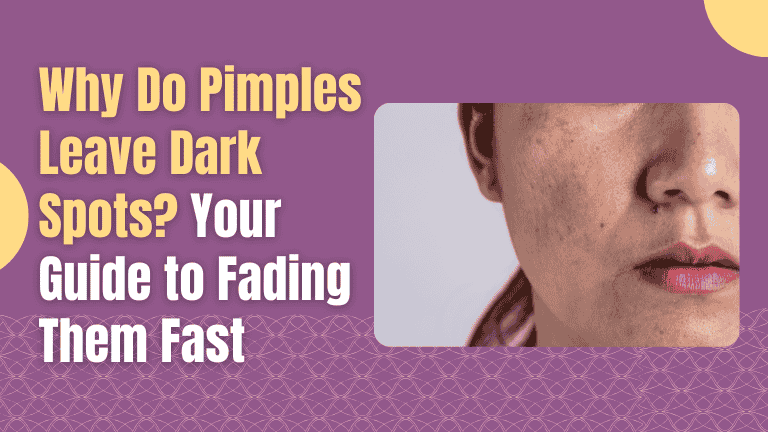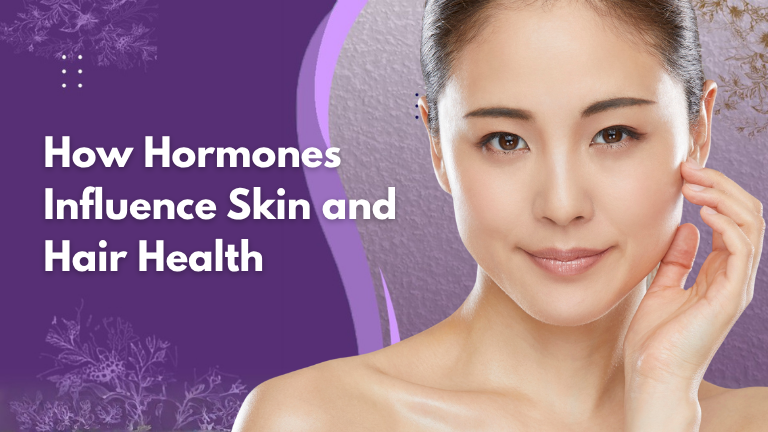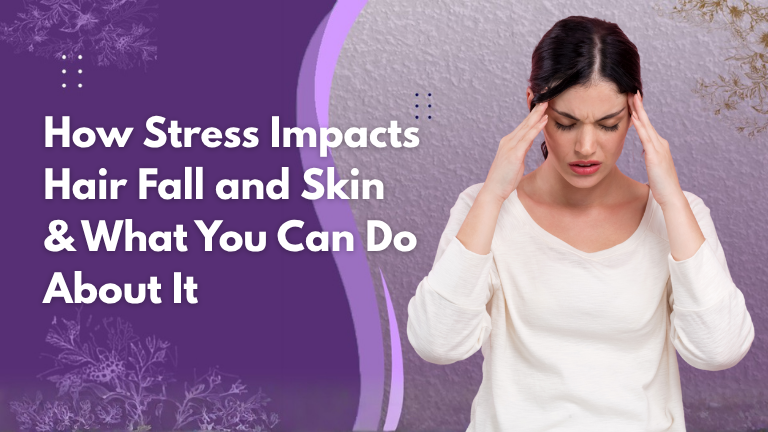Did you know that the dark spots could have vanished, but it can leave a permanent dark mark on your skin? It is so infuriating — the pimple has healed long ago, but the reminder still sticks around for weeks, even months. Dark spots, especially, are an issue on Indian skin, and they make us so conscious about our skin.
But why do they happen in the first place? The truth is, when your skin is red from a zit, it tries to heal itself. And in the process of healing, it can produce extra melanin — the very same natural pigment that colours your skin. That excess melanin in one area is what causes what we refer to as a dark spot or patch. It’s actually not a scar but shows much longer than the zit itself has really healed.
If you are thick with melanin (i.e., like most Indians, I suppose), then you’re even more likely to be left with these post-pimple marks. The good news? These spots can fade away – and there are treatments, ways to deal with them, and even prevent them in their tracks with proper care. Here in this blog, we will be talking about why these spots occur, how you can take control of them, and how you can obtain even-toned and clear-looking skin.
Why do pimples leave dark spots?
Pimples release inflammation that leads to an overabundance of melanin on the skin. An overabundance of pigment causes dark spots named post-inflammatory hyperpigmentation. Dark spots are produced by the skin when it responds to irritation or injury.
If a pimple does develop, it also irritates your skin. Your body responds automatically to this by trying to heal the damaged area — and in the process, sometimes secretes too much melanin (your skin’s colour pigment). Excess melanin collects in the irritated pimple site to create a dark mark once the pimple fades.
These are known as post-inflammatory hyperpigmentation. They’re not exactly scars, but they do hang out for weeks or months. You’re more likely to get these dark spots if you squeeze, touch, or pop the zit. This is more trauma and causes more pigment release. Indian skin is inherently the melanin type, so the likelihood of developing dark spots after acne is probably high.
The best news is that these spots will fade with time naturally — and with proper skin care (sunscreen, gentle cleansers, brightening agents), you can cause the spots to fade sooner, as well as prevent new marks from forming.
How to lighten a pimple mark?
Black spots: Mild peeling or vitamin C lotions, niacinamide, or azelaic acid can be used to peel black spots off. These will disappear in the long term. Use sun protection with sunscreen every day to avoid darkening of the spots.
Irritating dark spot-causing blemishes, yes, and the best part is that they too will fade with time — and with proper care, you can accelerate it. Number one and most important is to shield your skin from the sun. The UV light darkens the spots more and slows down healing. Use a broad-spectrum sunscreen at all times, even indoors.
Second, use mild skincare products containing the whitening agent like niacinamide, vitamin C, licorice extract, alpha arbutin, or glycolic acid. These dissolve color pigments gradually and even out your skin color. Use a product of your choice — if you have acne skin or sensitive skin.
Don’t scrub at the spot too hard or try to blend up at-home treatments that will dry out your skin. Keep your routine light and normal instead. If the mark is too deep or not letting up, a dermatologist can provide soothing prescription creams or treatments such as chemical peels or laser treatments. Your skin heals and becomes new again with the proper precautions.
How to prevent dark spot pimples?
Avoid popping or squeezing pimples since it leads to inflammation and derails pigmentation. It calms down your skin using anti-inflammatory products. Sunscreen also prevents spots from turning darker.
How to avoid a pimple from developing into a dark spot? and the solution is to take care of it and let it heal on its own time. The moment you notice a pimple starting to develop, apply a light cream for acne — one with salicylic acid, benzoyl peroxide, or tea tree oil — to it so that the swelling can subside flat in its very first stage. The flatter the pimple, the less the likelihood of its leaving behind a dark mark.
Never squeeze, pop, or pick at your pimples. This is the most common reason for dark spots. Picking results in additional inner skin damage, and then your body produces more melanin on that spot. That melanin is that persistent dark spot.
Also, use sunscreen at all times, even indoors. UV light is likely to leave dark healing pimples and spots visible. Use a gentle skin care routine, do not scrub too forcefully, and moisturize your skin and stretch it. If you are gentle when you treat your pimples, you give your skin the best chance possible to heal without leaving any marks.
How to eliminate a pimple overnight?
Wiping out is not a night ceremony, but use pimple spot treatments with benzoyl peroxide or tea tree oil to assist in reducing redness and puffiness. Use ice in an attempt to make puffiness vanish. Use moisturizer excessively in an attempt to hinder dryness.
You can’t get rid of a pimple overnight, but you certainly can reduce its redness and size with the proper measures. Begin with the gentle washing of your skin to unclog pores and remove grease and dirt. Next, apply a spot treatment of benzoyl peroxide, salicylic acid, or sulfur — all three reduce the puffed-up inflammation and dry out the pimple.
If it is red and puffy, ice it for several minutes. Place an ice cube in an ice cube tray and place an ice cube in a clean towel, and apply it to the area for 1–2 minutes. It will be smaller and swelling will be smaller in the morning.
Other people also use pimple stickers. They are little strips of adhesive that absorb pus and oil and keep the area from being touched and bacteria at night.
Be kind and gentle — do not pick at or squeeze the zit because it will lead to a worse or scar. With proper care, the pimple should be significantly better in the morning, but it may not have completely gone away yet.
Why do all pimples scar?
Pimples leave scars wherever they are popped or become infected. Furthermore, some types of skin make you liable to getting scars. If treated at the early stages of acne, then the risk would have been prevented.
If all your zits seem to be making an indentation or a scar, don’t worry, you’re not the only one — and there are more than a few reasons why it’s happening. One of the biggest offenders is inflammation. If a pimple is extremely red, inflamed, and sensitive, it’s because of too much inner skin damage. Your skin is responding by trying to heal the damage, but to an excessive extent that it creates too much tissue (too excessive scarring) and to too great an extent that it creates dents.
Genes play a role in it as well — some recover faster from naturally occurring blemishes than others do. And if you breakout or blemish badly consistently, your skin can’t fully heal between the time that it does, so permanent marks are what you’re left with.
To prevent scarring, never pop pimples, apply acne with topical remedies at the first phase of the disease, and apply sunscreen daily. On scarred skin, dermatologic treatment or products will break down scars in time.
Is skin type a factor to take into account while thinking about how long acne marks last?
Yes, oily and sensitive skin really causes permanent marks since there is intense inflammation with inadequate healing. Dark skin would easily experience pigmentation. Skincare is more customized to your requirements.
The black skin, to which the majority of Indian skin types are classified, will get post-inflammatory hyperpigmentation, or marks, once an acne lesion heals. These marks will last for weeks or months, especially if the person does not employ sun protection or does not follow any skincare regimen.
Also, if your skin heals slowly or is very sensitive to redness, then the scarring will take longer to heal. This is why it is so vital to use products that are suitable for your skin and that no longer squeeze or traumatize spots.
The short answer is that everyone’s skin is different, and how well the fading of acne marks works will depend on your skincare regimen, skin type, and break-out severity. The good news is that the majority of marks do fade away with time, with the assistance of good products and patience.
How to remove acne scars in case of sensitive skin?
Choose mild, fragrance-free products with niacinamide and aloe vera. Use harsher exfoliants lightly and introduce new products slowly. Treat your skin nicely each day.
Acne scarring on sensitive skin translates to being patient and gentle. Be gentle with your skin, but continue to assist it in recovering. Begin with non-irritating, fragrance-free, and especially products labeled as safe for use on sensitive skin. Aggressive treatments or aggressive exfoliants might actually do more harm, so don’t scrub or use alcohol toners.
Search for soothing brighteners such as niacinamide, azelaic acid, or madecassoside. They will lighten the marks without irritating the skin. Steer clear of excessive amounts of acids (such as glycolic or salicylic acid) unless ordered by your dermatologist. Instead, allow the skin to calm down first before using scar-lightening products gradually.
Also, have your skin well hydrated — healthy functioning skin heals better and will not react as harshly to treatments. And don’t forget to use sunscreen daily, even indoors. Sunlight will darken and harden to soften scars, especially on sensitive skin.
Will ice cubes erase black acne scars?
Ice will reduce redness and swelling that are temporary, but won’t remove pigmentation. Ice will calm red marks but won’t remove deeper scars. Use cautiously so you don’t irritate.
Applying ice cubes on the skin is soothing and can even reduce redness and swelling in an active pimple — but ice won’t reduce dark acne scars. Ice constricts the blood vessels and makes them smaller, thus reducing the swelling, so in the case of when you are attempting to soothe a new pimple, it could come in handy. However, when the pimple later heals and leaves behind a stain of colour or scar, ice is not going to assist you in getting rid of the colouring.
Dark acne scarring, or post-inflammatory hyperpigmentation, happens when your skin produces more melanin following inflammation. To work on lightening up these marks, you’ll want ingredients that address pigmentation — like vitamin C, niacinamide, azelaic acid, or alpha arbutin. They slowly and innocently lighten the skin over time.
So, of course, ice can be incorporated into your routine to soothe out breakouts, but it’s not the solution to evening out blotchy spots. For actual improvement, maintain a soothing skincare regimen, apply sunscreen every day, and be patient — scars heal slowly, but yes, it is achieved.
Is water key in the healing of acne scars?
Yes, rapid healing with moist skin and an intact barrier guard is ideal for eliminating marks. Washing your body with good drinking water and keeping your skin sufficiently lubricated at all times will heal your skin. Maximum hydration has to be sustained.
If your cells are irrigated, they heal faster and have a good skin guard, which is needed in healing dark spots and scars.
Aside from regulating your sebum, drinking enough water helps remove toxins from your body, which is good for the skin. Aside from water, hydrating your skin surface with a good moisturizer avoids dryness or redness that hinders healing.
Thus, adequate consumption of water and hydrating your skin both help to remove your acne marks sooner and enhance the health of your skin.
Conclusion
Pimples and the brown spots that they leave on your body are annoying, but understanding why they cause these spots and how to treat your skin properly is a lifesaver. Keep in mind that the dark spots are your healing process from inflammation, and this is going to happen more frequently in melanin skin like ours. The good news is that by providing good attention to the skin by taking proper care of the skin, applying sunscreen, and allowing it to settle down, such blemishes will become non-existent.
Don’t pop or squeeze pimples, protect the skin every day with sunscreen, and choose skin products based on your skin type—sensitive, oily, or acne. Water, also in the sense of consumption and moistening the skin, triggers healing to occur faster. Should you be referring to spots and recurring scars, your dermatologist can offer you personalized treatments best suited for you.
Your skin needs to be handled gently and with care. If you do this, your skin heals very well and glows again in its original colour.
FAQs
1.Can I omit sunscreen on rainy or cloudy days?
Everyone believes that sunscreen is required only when it’s hot outside, but that’s a misconception. Up to 80% of UV rays pass through clouds as well, so your skin is still vulnerable even on cloudy or rainy days. UVA rays, which contribute to pigmentation and aging, are present all year round. Thus, use broad-spectrum sunscreen daily, irrespective of the weather, to protect your skin and prevent dark spots from getting worse.
2. Do I have to reapply sunscreen if I stay indoors all day?
Although you receive less UV exposure indoors, UVA rays do pass through windows and harm your skin. Reapplying sunscreen frequently, in case you do have extended exposure near windows or before computers, can be helpful. If your indoor space is typically in shade, morning application alone would suffice. For optimal protection, do take your activity level into consideration and reapply sunscreen every 2-3 hours if you go out.
3. Are babies and adolescents safe on sunscreens?
Yes, there are sunscreens available with sensitive skin formulae that can be applied to children above six months in a safe manner. Gently, non-comedogenic, fragrance-free sunscreens can be utilized in infants and adolescents. They protect the sensitive skin of the face from the damage caused by UV and guard against premature pigmentation. In acne-induced adolescents, oil-free lightweight sunscreens that do not clog pores are to be used.
4. Can sunscreen delay tanning during Indian summers?
Sunscreens block UVB rays that cause sunburn and tanning, but no sunscreen is 100% protective against UV rays. Thus, some tanning will still occur even when sunscreen is used regularly. Protective clothing, shade, and frequent reapplication of sunscreen usually reduce tanning and buildup of pigment. Remember, frequent application of sunscreen reduces skin damage and future pigmentation.
5. When should sunscreen be applied most during the day?
The rays of the sun are most intense between 10 a.m. and 4 p.m., and this is when your skin is most exposed to damage. Using sunscreen in the morning and adding a new coating every 2-3 hours within this timeframe gives your skin maximum protection. UV rays are present during daylight hours; however, it is advisable to use sunscreen every day, anytime, to have constant skin protection.




